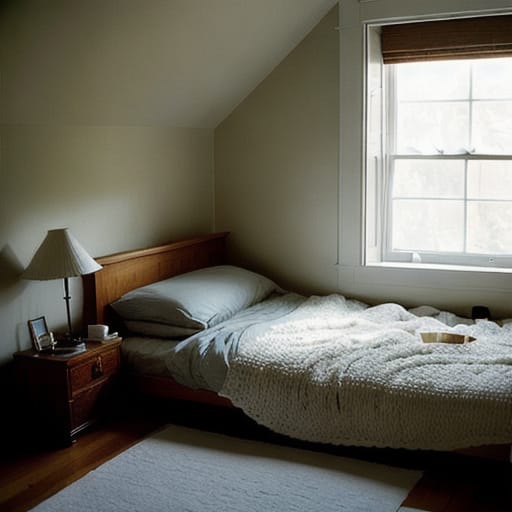Are you looking to add some luxurious softness and ultimate comfort to your bed? Down comforters can provide exceptional warmth and coziness, but they aren’t suitable for every sensitive sleeper. From hypoallergenic options to budget-friendly finds, down comforter alternatives offer similar lightweight comfort without the high price tag or allergy worries.
What Are Down Comforters?
Before diving into the alternatives, let’s explore what exactly down comforters are.
The Composition of Down
Down comforters are filled with the fine, fluffy inner cluster materials from waterfowl like ducks and geese. This is the soft undercoating found under the exterior feathers. They are designed to provide exceptional warmth for the birds to survive cold temperatures.
The most premium down comforters use fill made from Hungarian white goose down. This type of down is exceptionally fluffy and lofty. It’s also very good at trapping body heat.
The Benefits
So why opt for pricey down comforters instead of cheaper synthetic alternatives? Here are some of the main benefits:
- Ultra-soft and plush feel
- Very breathable and moisture-wicking
- Excellent insulation to keep you exceptionally warm
- Extremely lightweight and comfortable
- Long lifespan with proper care
- Can be used year-round by changing duvet covers
With lofty fill power over 600 cuin (cubic inches) per ounce and a high gram per square meter (GSM) fill weight, down offers incredible coziness that synthetic materials have a tough time replicating.
The Downsides
However, down comforters also come with some disadvantages:
- Expensive, with premium options costing over $1000
- Not vegan or animal-conscious
- Allergies and sensitivities to down
- Requires more careful cleaning to avoid damage
- Heavier than some synthetic alternatives
- Loses insulation value when wet
For those wanting to avoid animal products or with sensitivities to down, alternatives can provide a similar sleeping experience without the drawbacks.
What Are the Alternatives to Down Comforters?
Down comforter alternatives use synthetic fills rather than natural down. Many are specifically designed to have a very similar look, feel, and level of comfort as down:
There are two main types of synthetic down alternatives:
- Polyester – Usually a very fine microfiber that mimics the cluster-like structure of down. Provides decent warmth at an affordable price point.
- Comforel or PrimaLoft – Proprietary synthetic fills made from ultra-fine fibers. The closest synthetic equivalent to natural goose down.
Benefits of down alternatives include:
- More affordable than natural down
- Vegan and animal-conscious options
- Hypoallergenic and less likely to trigger allergies
- Easy care compared to natural down
- Maintains insulation when wet
- Wide range of prices to suit any budget
The tradeoffs are that they don’t tend to be quite as lofty, breathable, or long-lasting as high-end down comforters. However for allergy sufferers or vegans, they offer a fantastic solution for staying cozy at night!
Now let’s explore popular down alternative options for every type of sleeper.
Temperature-Controlled Comforters
One of the great aspects of down comforters is that their light, billowy fill adapts well to ambient temperature changes. Down alternative comforters aim to mimic this trait with materials that help regulate your comfort all night long.
4-Season Comforters
These medium-weight comforters work well year-round. The fill adjusts to trap more warmth in winter months but remains breathable during summer:
Some top-rated 4-season down alternative comforters include:
- Amerisleep – Recover+ Comforter with responsive Comforel fill
- Brooklinen – All-season down-alternative comforter
- Buffy – Breeze comforter made from recycled plastic bottles

Ultra-Warm “Arctic” Comforters
For those wanting to stay extra toasty on cold winter nights, arctic comforters use varying fill densities to provide enhanced warmth. These maintain a comfortable sleeping climate without overheating:
| Product | Fill Material | Price |
|---|---|---|
| Snowe Down Alternative Comforter | PrimaLoft Fill | $199 |
| Buffy Cloud Comforter | Proprietary Cloudloft Fill | $169 |
The arctic comforters cost a bit more but promise to keep you cozy even in unheated spaces like mountain cabins!
Lightweight Summer Comforters
On the other end of the spectrum, these light-as-air comforters use less fill to remain cooling during summer:
Top options for hot sleepers include:
- Cozy Earth Bamboo Comforter
- Buffy Breeze Comforter
- Parachute Lightweight Comforter
Prices range from $229-$349 for a Queen size. The ultra-breathable materials make these ideal for humid climates or hot flashes.
No matter your climate, there is a down alternative comforter to keep your sleep space comfy year-round!
Fill Power, Fabric, and More
When comparing down comforters and alternatives, terms like “fill power” and “GSF” get thrown around a lot. Here’s what to know about these specs and other factors that influence overall quality and pricing.
Fill Material Specifications
Fill power refers to the loft and fluffiness of the fill material. Down fill power ranges from 600-900. Most quality down alternatives rate 300-400 fill power.
GSM (gram per square meter) indicates the density of the fill inside the comforter. Higher GSM means more fill and increased warmth. Down comforters often range from 600-1200 GSM. Quality down alternatives usually rate 200-400 GSM.
So for exceptional year-round comfort, look for alternatives with 350+ fill power and 300+ GSM.
Outer Fabric Matters Too!
Along with high-performing fill materials, pay attention to the woven outer shell:
Look for these ideal fabric qualities:
- High thread counts from 200-400 for strength
- Sateen weaves for softness against skin
- Dobby check or jacquard damask woven designs
- Oeko-Tex certified fabrics for safety
Well-constructed down alternative comforters can mimic the billowy plushness of fine down, but cost far less money!
Caring for Your Down Alternative Comforter
One of the major advantages of down comforter alternatives is that they are MUCH easier to clean and care for long-term!
Follow these tips to extend the life of your synthetic fill comforter:
- Spot clean small stains instead of full washing cycles
- Use cool water on gentle/delicate when machine washing
- Line dry or tumble dry on low when machine drying
- Fluff the comforter 2-3x per year to maintain loft
By avoiding excessive heat and agitation, you can keep a quality down alternative in stellar condition for up to 5 years!

Achieving Downy Softness Without Down
While 100% down will likely always offer peerless softness and cloud-like coziness, today’s down alternatives come remarkably close in comfort. By mimicking delicate down clusters with proprietary synthetic fills and whisper-soft fabrics, you can enjoy sensuous softness all night long without paying luxury price tags.
Frequently Asked Questions
What’s the difference between down and down alternative comforters?
Down comforters are filled with the ultra-soft under feathers from ducks and geese. Down alternative comforters mimic the feel of down using synthetic fills like microfiber polyester.
Is down or down alternative better?
100% goose down is warmer, softer and more durable than synthetic fills. But down alternative comforters are cheaper, hypoallergenic, easier to clean, and vegan. So there are good reasons to consider both options.
What is the warmest down alternative comforter?
For exceptional warmth, look for down alternative comforters with high fill power (350+) and dense fill weight (300+ GSM). Arctic comforters use varying insulation zones to trap body heat.
Is down alternative hotter than down?
Down tends to feel lighter and more breathable, while some synthetics can feel overly warm for hot sleepers. However, lightweight down alternatives work well for keeping cool in summer.
How do I wash a down alternative comforter?
Use gentle cycles in cool water, delicate detergents, and low heat for drying. Always spot clean stains first when possible instead of full washes.
How long does a down alternative comforter last?
With proper care, a quality down alternative comforter will last around 5 years before losing its loft and needing replacement. Higher fill power and GSM ratings increase overall durability.
What’s inside a down alternative comforter?
The most common fill materials are polyester microfibers or proprietary synthetics like PrimaLoft. These are specially engineered to mimic the cluster-like structure of down feathers.








